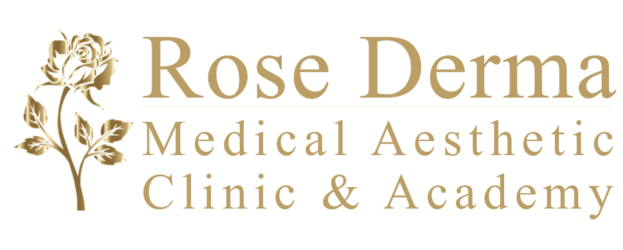Working Time
- – Monday-Friday 09:00 – 16:00
(After 16:00 Only with appointment)
– Saturday, Sunday With appointment
Contact Info
-
-
Tel: 1-514-243-4019
-
Ask the Experts
Medical Micro pigmentation
Medical Micro-Pigmentation, also known as medical tattooing or paramedical tattooing, is a specialized technique that involves the application of pigment to the skin for medical or cosmetic purposes. This non-invasive procedure is used to enhance or restore natural features and camouflage skin conditions. It is a highly skilled process that uses medical-grade equipment and pigments to achieve natural-looking results, often for patients recovering from surgery or dealing with skin conditions that affect their appearance.
Key Applications of Medical Micro-Pigmentation:
- Areola and Nipple Reconstruction:
- After breast surgery (such as mastectomy or breast reconstruction), medical micro-pigmentation can be used to create or restore the appearance of areolas and nipples. The procedure helps create a realistic, natural-looking result by tattooing the surrounding area to mimic the color, shape, and texture of a natural nipple-areola complex.
- Scalp Micropigmentation (SMP):
- SMP is a type of medical micro-pigmentation used to treat hair loss. It involves the tattooing of pigment on the scalp to simulate the appearance of hair follicles, creating the illusion of a fuller head of hair. It’s often used for male and female pattern baldness, thinning hair, or receding hairlines.
- Scar Camouflage:
- Medical micro-pigmentation can help reduce the appearance of scars, including those from surgeries, accidents, burns, or stretch marks. The tattooing technique involves applying pigment to the scar tissue to blend it with the surrounding skin, making the scar less noticeable.
- Vitiligo Camouflage:
- For individuals with vitiligo, a skin condition where patches of skin lose pigment, medical micro-pigmentation can be used to add color to the white patches and blend them with the surrounding skin. This helps improve the skin’s overall appearance and restore even skin tone.
- Eyebrow Microblading (for medical purposes):
- While typically considered a cosmetic procedure, medical micro-pigmentation is used in cases of alopecia (hair loss) or after chemotherapy to restore natural-looking eyebrows. This technique can help people who have lost their eyebrows due to illness or treatments achieve a fuller, more natural look.
- Lip Pigmentation:
- This can be used to correct uneven lip color or restore color to pale lips. It is often used by people who have lost lip pigment due to medical conditions or aging, helping them achieve fuller, more defined lips.
- Permanent Eyeliner:
- Medical micro-pigmentation can be used to enhance the eyes by tattooing a fine line of pigment along the lash line. This is especially beneficial for people with allergies or limited dexterity who may find applying makeup difficult.
Process of Medical Micro-Pigmentation:
- Consultation:
- The process typically begins with a thorough consultation, where the practitioner evaluates the skin condition, discusses the patient’s goals, and outlines the treatment plan. The practitioner will also review medical history to ensure there are no contraindications.
- Design and Color Matching:
- For procedures like areola restoration or lip pigmentation, the practitioner will work closely with the patient to select the most natural color that matches the surrounding skin tone. Precision is key in these procedures to ensure a realistic result.
- Pigment Application:
- Using a sterile needle, the practitioner will apply the specially chosen pigment to the skin. The technique involves inserting the pigment into the dermis layer of the skin, creating a lasting effect. For areas like eyebrows, fine lines are tattooed to simulate hair strokes.
- Healing and Aftercare:
- Medical micro-pigmentation requires minimal downtime, but proper aftercare is important. Patients are typically advised to avoid sun exposure, refrain from touching the treated area, and follow specific hygiene instructions to avoid infection and ensure optimal results.
- Touch-Ups:
- Since the pigments used in medical micro-pigmentation are semi-permanent, touch-up sessions may be necessary to maintain the desired appearance. These can be scheduled every 1 to 3 years depending on the individual’s skin type and the area treated.
Benefits of Medical Micro-Pigmentation:
- Non-Invasive: Unlike surgical procedures, medical micro-pigmentation is non-invasive, meaning there is no cutting or stitching involved.
- Quick Recovery: Most procedures involve minimal downtime, and the healing process is typically quick with little to no discomfort.
- Natural-Looking Results: When done correctly, medical micro-pigmentation can create realistic, natural results that improve a person’s appearance and boost self-confidence.
- Customizable: The procedure is tailored to each patient’s unique needs, whether it’s for aesthetic enhancement or for restoring lost features due to illness or injury.
- Long-Lasting: While it’s not permanent, medical micro-pigmentation can last several years, reducing the need for constant touch-ups or maintenance.
Candidates for Medical Micro-Pigmentation:
- Post-Surgery Patients: Individuals recovering from breast cancer surgery, skin grafts, or burns can benefit from areola restoration, scar camouflage, and other techniques.
- Hair Loss Sufferers: Those experiencing hair thinning or baldness, including people with alopecia or those undergoing chemotherapy, can benefit from scalp micropigmentation and eyebrow restoration.
- People with Skin Conditions: Individuals with vitiligo or hyperpigmentation may choose medical micro-pigmentation to restore a more even skin tone.
- Individuals Seeking Aesthetic Enhancement: Those looking for long-lasting cosmetic solutions for eyebrow shaping, lip enhancement, or eyeliner can also benefit from the procedure.
